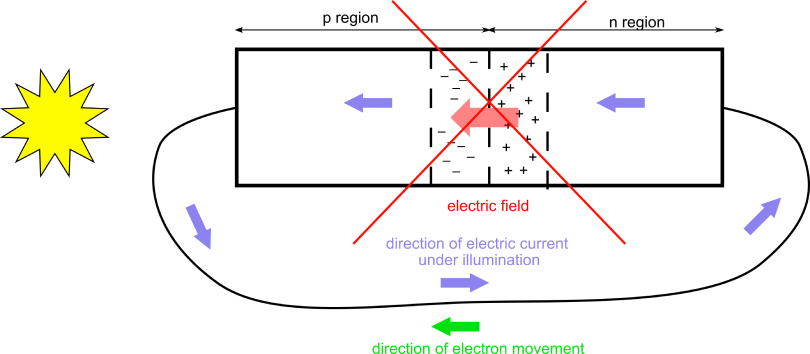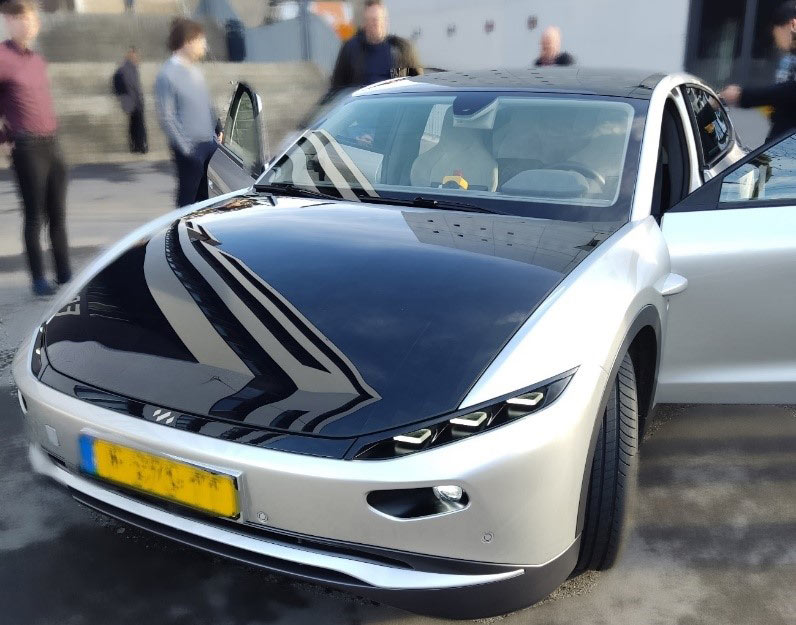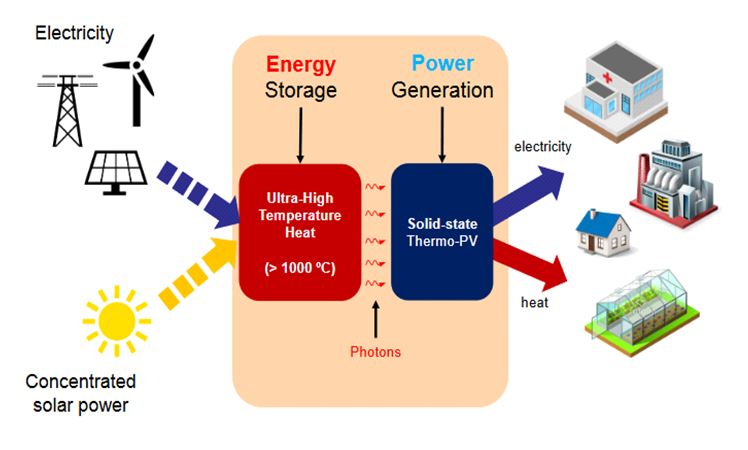The photovoltaic effect refers to the experimental observation of a voltage arising as a result of light shining on a system. The most common observation of this phenomenon occurs in the context of solar cells, where it is used to extract electrical energy from solar energy, and where, because of this, solar cells are also known as “photovoltaic cells”. The photovoltaic effect should not be confused with the photoelectric effect, which involves the extraction of electrons from a material as a result of light shining on it, and for which explanation Albert Einstein received the Nobel Prize.
Most photovoltaic cells are based on semiconductor junctions known as p-n junctions or diodes. The appearance of an electric field in these junctions has also led to the mistaken belief, unfortunately very widespread, that this electric field is responsible for the photovoltaic effect. The origin of the confusion lies in the fact that, accidentally, as illustrated in the figure, the direction of the electric field coincides with the direction of movement that an electron would take in the electric field, and therefore with the direction observed for the circulation of electric current in illumination.
However, in our Master’s Program, we explain the photovoltaic effect correctly based on the existence of the electrochemical potential in a solar cell, instead of an electric field, which allows our students to understand the operation not only of conventional silicon-based p-n junction cells, but also of other emerging cells such as perovskite, dye, hot carrier, intermediate band, etc.




